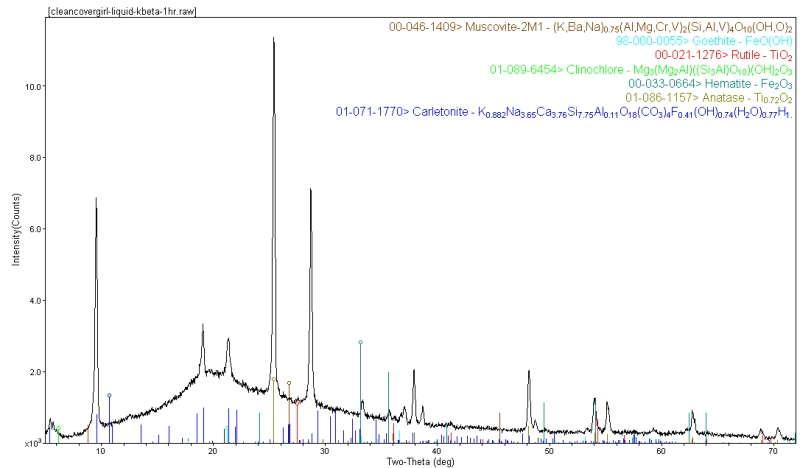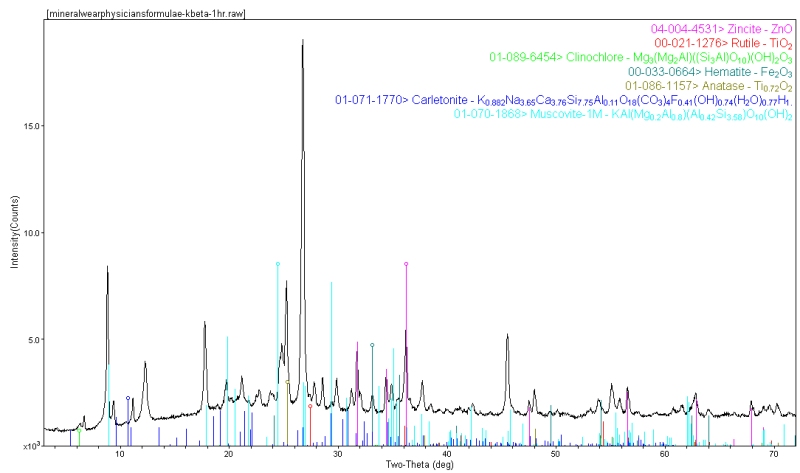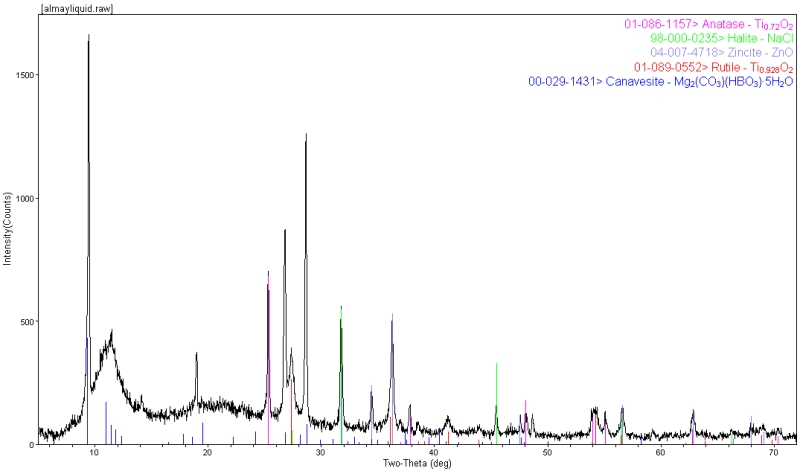Background
A common marketing approach in the cosmetics industry today is the branding of natural products. These natural cosmetics claim to use natural ingredients for effects such shine, whitening, and sun protection. X-ray diffraction (XRD ) is an excellent technique to identify the composition of materials in the cosmetics industry.
Investigation
As an example four brands of so called "natural" cosmetic foundations were analyzed for composition using the MiniFlex benchtop diffractometer. The scans and phase identification results can be seen in figures 1 through 4. The figures show that the foundations contained many of the same basic ingredients. Rutile and Anatase were present in all for whiting. Two used zincite as a whitener and sunscreen. One product contained Bismoclite. This somewhat obscure mineral yields a pearlescent effect or glow. It is interesting to note that this somewhat un-natural cosmetic effect is obtained using a naturally occurring material. In truth the XRD data clearly shows that these products did live up to their claims of using natural ingredients. The X-ray diffraction pattern of this material (Figure 2), acquired using a Rigaku MiniFlex benchtop diffractometer, reveals that this sample contains both crystalline and amorphous components. The broad humps in the pattern come from the amorphous component(s) while the sharp peaks come from the crystalline portion. By determining the location and intensity of the crystalline diffraction peaks and matching to a known database of crystalline materials, it is possible to identify the crystalline component of the sample.




